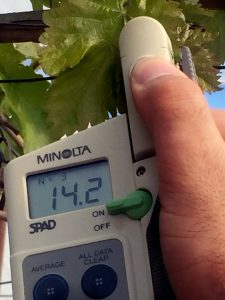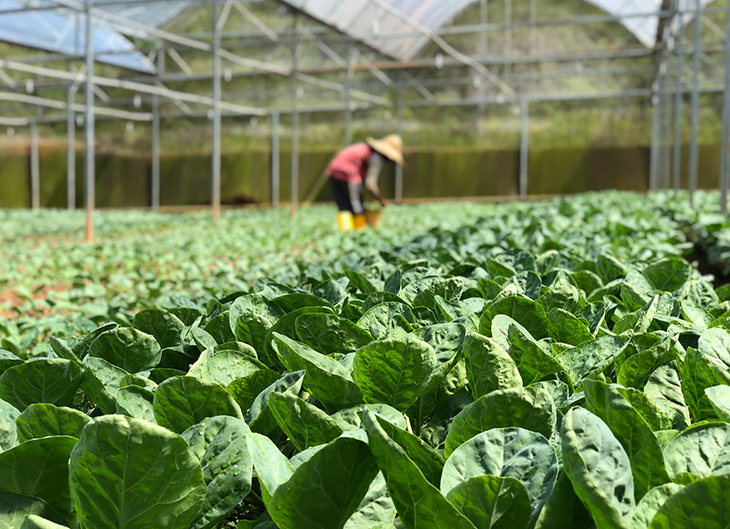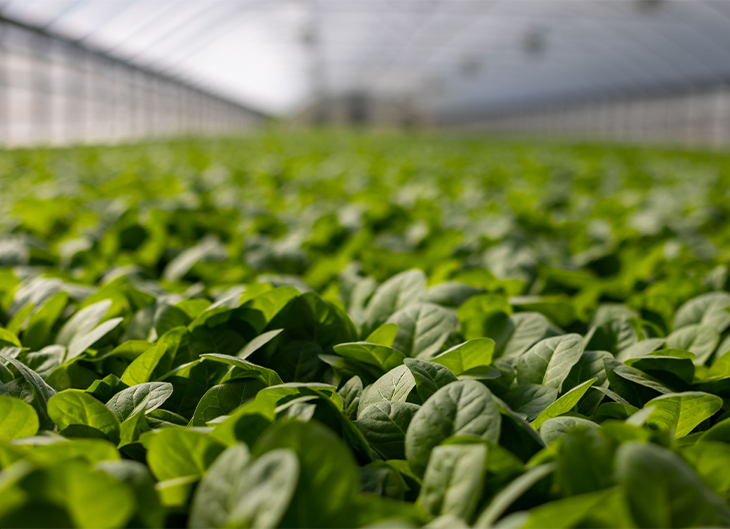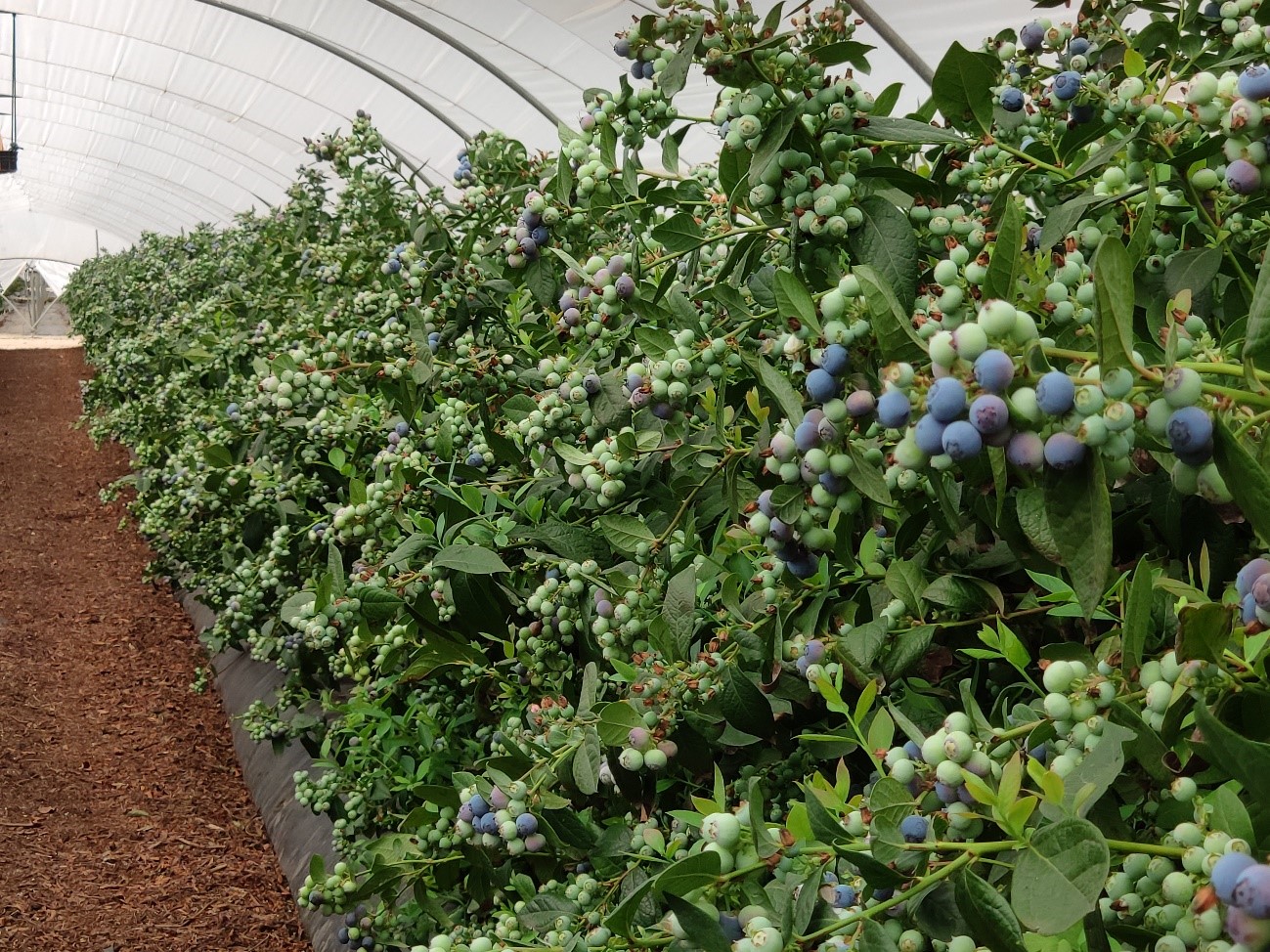
LANZADERA® 3: New zinc, manganese and magnesium corrector from the Lanzadera® Range
Zinc, manganese and magnesium are essential elements for plant life, acting in protein synthesis and the formation of sugars, and playing an important role in photosynthesis by increasing chlorophyll levels.
Our Lanzadera® 3 is a Zn, Mn and Mg deficiency corrector, and has been tested on crops such as table grapes and raspberries, analysing its effect by measuring two variables:

Image 1. SPAD chlorophyll measuring device
1. Leaf chlorophyll content:
A SPAD device (see image 1) is used that calculates a numerical value proportional to the leaf’s chlorophyll content by measuring absorbency levels in the leaf in red and near infra-red regions. Why measure chlorophyll? Lanzadera® 3 introduces three elements to the plant: zinc, manganese and magnesium, all of which are closely linked to chlorophyll formation and photosynthesis. So if the chlorophyll content is increased we can assume our product is being absorbed by the plant.
2. Zinc, manganese and magnesium content in the leaf. This measurement confirms whether the three elements introduced by Lanzadera® 3 have been absorbed by the plant. To do this, a sample of leaves (approximately 200g) was collected at random to be representative of the plot.
In tests Lanzadera® 3 was applied via a single foliar spray, with a 0.25% dose in a 1000 litres per hectare solution volume.
15 days following the application, the chlorophyll content of 60 leaves selected at random from the plot was measured. The results showed it had increased by between 22% and 48% when compared with the values observed from the untreated crop area (see Table 1).

Table 1
The data above shows how our Lanzadera® 3 product, with just one application at a dose of 25% of the solution volume, leads to:
- 1. Increased chlorophyll content in the plant, and as such an increase in photosynthesis.
- 2. Increased levels of zinc, manganese and magnesium in the leaf.
The results explain why the action of the complexing agent (gluconic acid) is boosted by the exclusive Lanzadera® System, which thanks to the smaller molecule size ensures quicker absorption and penetration speed of cations by plant tissues.





